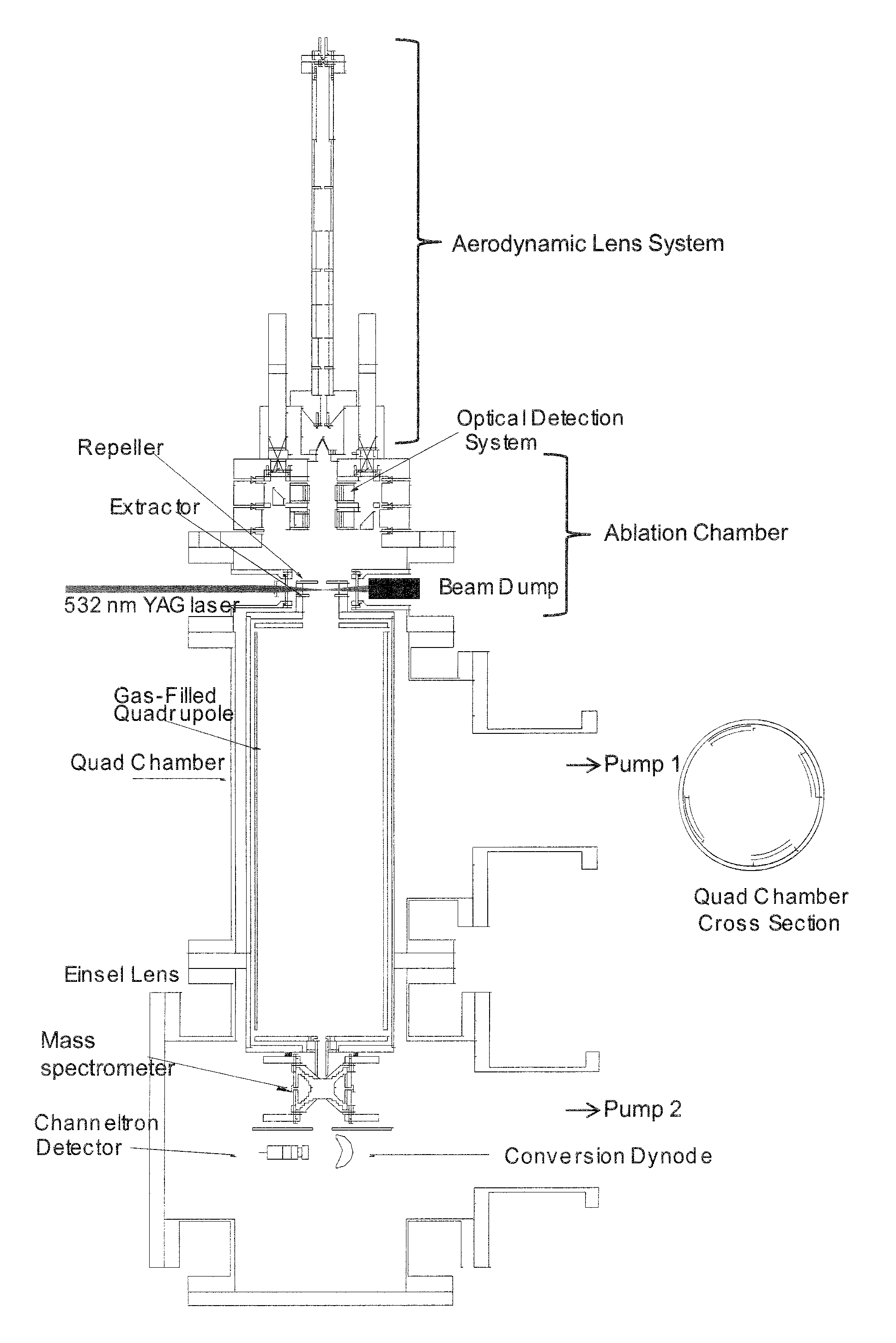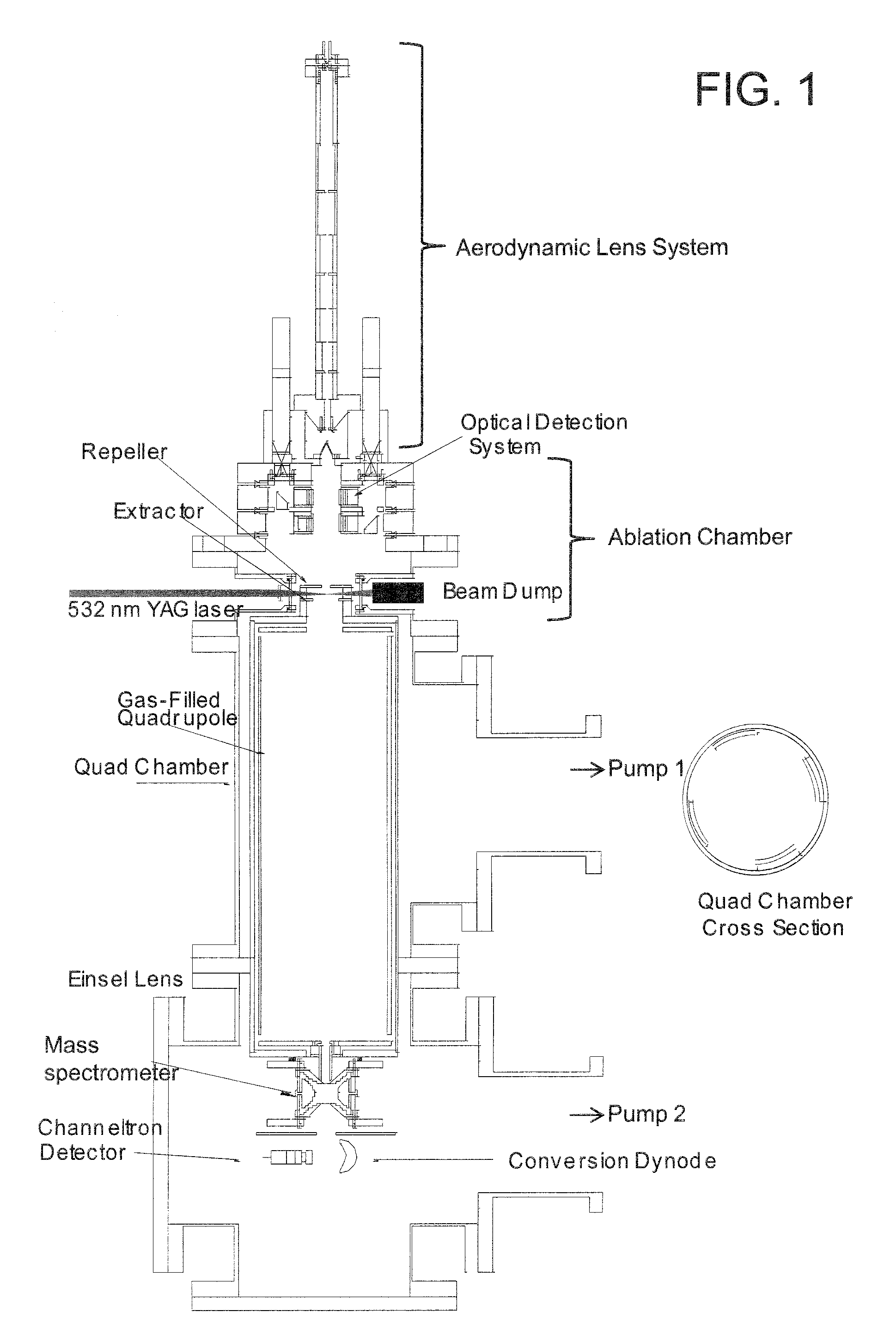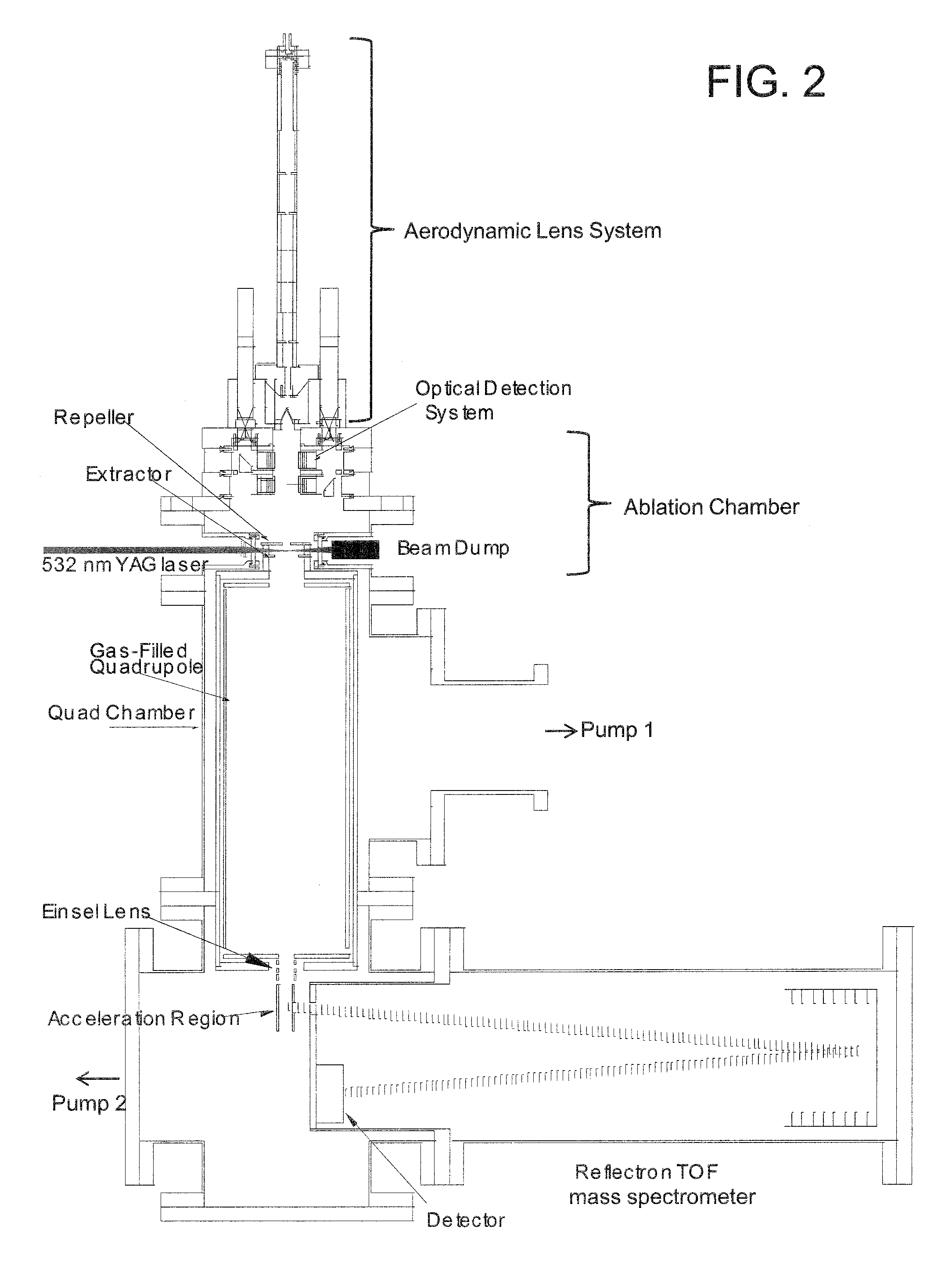Real-time airborne particle analyzer
a particle analyzer and airborne technology, applied in the field of analytical instruments, can solve the problems of limiting the purity and composition of particles that may be analyzed effectively, preventing reliable real-time analysis of particles in an environment, and limiting the power of mass analysis, so as to reduce the electrical charge distribution and the speed of ablated particles
- Summary
- Abstract
- Description
- Claims
- Application Information
AI Technical Summary
Benefits of technology
Problems solved by technology
Method used
Image
Examples
Embodiment Construction
[0051]As stated above, the present invention relates to analytical instrumentation and methods of operating the same, which are now described in detail with accompanying figures. It is noted that proportions of various elements in the accompanying figures are not drawn to scale to enable clear illustration of elements having smaller dimensions relative to other elements having larger dimensions.
[0052]Referring to FIG. 1, a first exemplary instrumentation includes an aerosol particle supply system, an ablation chamber, a gas-filled conduit, and an ion trap mass spectrometer. The aerosol particle supply system and the ablation chamber are connected to each other through a first opening, which is an orifice at the outlet of the aerodynamic lens system. The ablation chamber and the gas-filled conduit are connected through a second opening. The gas-filled conduit and the ion trap are connected through a third opening. The ion trap mass spectrometer, and the gas-filled conduit are housed ...
PUM
 Login to View More
Login to View More Abstract
Description
Claims
Application Information
 Login to View More
Login to View More - R&D
- Intellectual Property
- Life Sciences
- Materials
- Tech Scout
- Unparalleled Data Quality
- Higher Quality Content
- 60% Fewer Hallucinations
Browse by: Latest US Patents, China's latest patents, Technical Efficacy Thesaurus, Application Domain, Technology Topic, Popular Technical Reports.
© 2025 PatSnap. All rights reserved.Legal|Privacy policy|Modern Slavery Act Transparency Statement|Sitemap|About US| Contact US: help@patsnap.com



